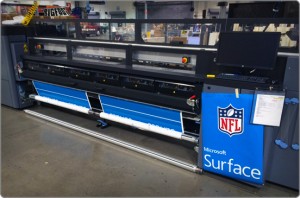Need Printing for Outdoor Use? Here are Some Points to Consider
I t is easy to print for indoor applications. But printing for outdoor use almost always has a certain amount of uncertainty about it. Exposure to weather elements like the sun, rain, wind, pollution, and snow are common problems that affect the durability of signs.
t is easy to print for indoor applications. But printing for outdoor use almost always has a certain amount of uncertainty about it. Exposure to weather elements like the sun, rain, wind, pollution, and snow are common problems that affect the durability of signs.
It is impossible to completely protect your signs from weather elements. However, there are several ways to increase their longevity. Before choosing a product, you should study the environment where it is going to be used. If you live in a sunny area, your requirements will be different than those of someone who lives a cold area. Plus, you need to consider both man-made and natural hazards.
You should also evaluate the durability of the various components used for printing. In addition, you need to ensure that components like media, ink, substrate, and laminate are compatible with one another.
If the sign faces the sun, exposure to ultraviolet rays is a serious concern and therefore it has to be manufactured accordingly. In this case, irrespective of the type of ink you use, a UV-resistant laminate is a must.
Here are common factors that result in product failure when printing for outdoor use.
Temperature
Most products have a minimum and maximum temperature range. Before using a particular product, you should match it with the highest and lowest temperature of the location where the sign is going to be used.
Moisture
Aqueous inks aren’t waterproof. Even if the sign is laminated, moisture can still seep in through tiny cracks or tears and spoil the artwork. Other inks are waterproof to a great extent.
It should also be remembered that some print laminates aren’t waterproof. Coated materials might have waterproof substrates, but they are not the same as waterproof coatings. Before using a product, you should check its specifications carefully. Keep in mind that water proof materials are very different from water resistant materials.
Sun
Exposure to ultraviolet rays is perhaps the biggest cause of signage failure. In order to ensure durability, you have to use a durable ink like latex or solvent. You will also have to coat the sign with a UV inhibitor laminate.
Winds
Strong winds can damage banners and awnings. Because of their flexible nature, they often fall prey to strong winds. Different banner materials have different levels of strength. Matching the strength ratings of the material to the requirements is very important.
When printing for outdoor use, the most important thing is to choose products that can withstand weather elements. We have the right materials to stand rain, snow, heat, or humidity. Contact us and we can create attractive and durable signs for you.
